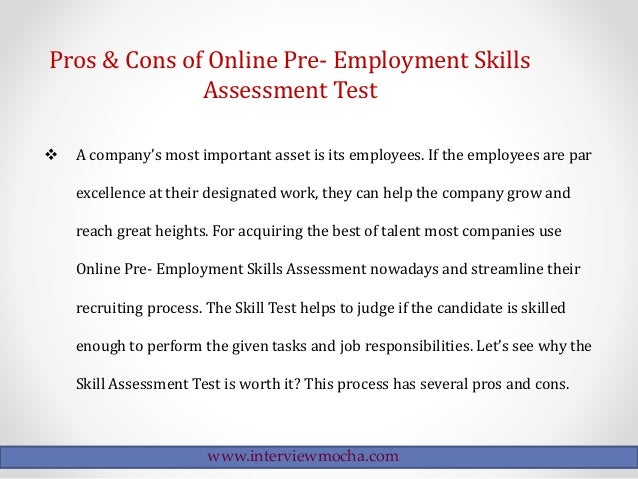Advantages And Disadvantages Of Manual Labour Staffing
Advantages and Disadvantages of Subsurface Drip Irrigation. Black/PMS 186. After the system is installed, the manual labor required to operate the system is similar to that required to operate a center pivot and is much less than that required for a surface system. Be it as it may the movement of labour freely is still normal within EU zones by it citizens even if there are still some restriction which i beleive will be totally lifted with time. There are some arguments on the advantages and disadvantages of free labour within the European union members as follows. According to her, workers with steady careers 'aren’t confronted with the realities of the labor market in the same way we’ll be if we are out in it, looking for work more often.' Since there are several possible advantages and disadvantages, you need to “weigh” which are the most important for you.
- Advantages And Disadvantages Of Nuclear Energy
- Advantages And Disadvantages Of Globalization
- Advantages And Disadvantages Of Wind Energy
You can test software through both automated and manual testing, but which one you choose comes down to the associated costs and benefits of each on your particular project. Today we’ll walk you through the pros and cons of using both automated and manual testing methods so that you can determine which is best for your project. Hint though? The answer can be a combination of both.
Automated testing is the process through which automated tools run tests that repeat predefined actions, comparing a developing program’s expected and actual outcomes. If the program expectations and outcomes align, your project is behaving as it should, and you are likely bug free. If the two don’t align, however, there is an issue that needs to be addressed. You’ll have to take a look at your code, alter it, and continue to run tests until the actual and expected outcomes align.
Automated testing is good to use when the project is large, there are many system users, or when filling out forms.
1. Runs tests quickly and effectively
While the initial setup of automated test cases may take a while, once you’ve automated your tests, you’re good to go. You can reuse tests, which is good news for those of you running regressions on constantly changing code. You won’t have to continuously fill out the same information or remember to run certain tests. Everything is done for you automatically.
2. Can be cost effective
While automation tools can be expensive in the short-term, they save you money in the long-term. They not only do more than a human can in a given amount of time, they also find defects quicker. This allows your team to react more quickly, saving you both precious time and money.
3. More interesting
Filling out the same forms time after time can be frustrating, and not to mention boring. Test automation solves this problem. The process of setting up test cases takes coding and thought, which keeps your best technical minds involved and committed to the process.
4. Everyone can see results
When one person is doing manual testing, the rest of the team can’t see the results of the tests being run. With automated tests, however, people can sign into the testing system and see the results. This allows for greater team collaboration and a better final product.
1. Tools can be expensive
The automation tools can be an expensive purchase. As a result, it is important to only use the ones that will give you full, or as close to full coverage, as you can find.

2. Tools still take time
While the automation process cuts down on the time it takes to test everything by hand, automated testing is still a time intensive process. A considerable amount of time goes into developing the automated tests and letting them run. For example, a large client of ours ran into trouble when their daily run of automated tests exceeded the 24-hour mark.
3. Tools have limitations
While automated tests will detect most bugs in your system, there are limitations. For example, the automated tools can’t test for visual considerations like image color or font size. Changes in these can only be detected by manual testing, which means that not all testing can be done with automatic tools.
Manual testing is the process through which software developers run tests manually, comparing program expectations and actual outcomes in order to find software defects.
These manual tests are no more than the tester using the program as an end user would, and then determining whether or not the program acts appropriately. Manual testing is a good fit for smaller projects as well as companies without significant financial resources.
1. Short-term cost is lower
Buying software automation tools is expensive. With manual testing, you won’t have to put the same up-front costs into the software.
2. More likely to find real user issues
Automated tests are just that – automatic. They’re robotic and don’t necessarily act as a real user would. Manual testing, on the other hand, allows the developing program to be used as it would be upon launch. Any bugs that may pop up when a user handles the program in a certain way are more likely to be caught with manual testing.
3. Manual testing is flexible
When one of those brilliant thoughts comes to you, something that could change the course of the project, you want to be able to work on it immediately. With automated testing this is difficult. You have to set up test cases, program it into the automated tool, and then run the tests. With manual testing, you can just quickly test and see the results. Automatic tests take more time to set up, which doesn’t allow you to test ideas quickly and easily.
1. Certain tasks are difficult to do manually
There are certain actions that are difficult to do manually. For example? Low level interface regression testing. Rdesktop autoselected keyboard map en-us error unable to connect. This kind of testing is extremely difficult to perform manually, and, as a result, is prone to mistakes and oversight when done by hand. Automated testing, once set up, is much better equipped to find errors for this kind of testing.
2. Not stimulating
Manual testing can be repetitive and boring – no one wants to keep filling out the same forms time after time. As a result, many testers have a hard time staying engaged in this process, and errors are more likely to occur.
3. Can’t reuse manual tests
With automated tests, if you add anything to the program, you can rerun all of the required tests instantly – the tests are already set up. This isn’t the case with manual testing. If there is any change to the software, you have to run the tests again by hand. This is valuable time lost.
There are both pros and cons to automated and manual testing. While many say that common sense is supposed to guide you in making the decision of which one to use, common sense won’t lead you unless you have all of the information. Make sure that you consider your time, your resources, and the size of your project as well as the quality of the automated tools you’ll be using and your testing team’s knowledge. Once you take these things into mind, you’re more likely to do what’s best for you. Always remember though that combining both is an option. In fact, combining the two may be optimal for canceling out the others’ cons and developing the best software possible.
Which method do you use for software testing? Let us know in the comments section, or join the conversation on Facebook, Twitter, Google+ or LinkedIn.
Thanks to coolmikeol and kiwanja for the use of their respective photographs.
Flexible staffing is a form of employment that includes temporary, contract and on-call jobs. Some disadvantages of flexible staffing include lower average wages and fewer employee benefits. However, flexible staffing provides workplace flexibility and reduces company employment costs. Flexible work arrangements accomodate employees with school and family responsibilities.
Advantages And Disadvantages Of Nuclear Energy
Flexible staffing is a form of employment that includes temporary, contract and on-call jobs. Some disadvantages of flexible staffing include lower average wages and fewer employee benefits. However, flexible staffing provides workplace flexibility and reduces company employment costs. Flexible work arrangements accomodate employees with school and family responsibilities.
Advantage: Accomodate Employee Lifestyles


Flexible staffing benefits workers who are willing to sacrifice permanent full-time jobs for the ability to spend more time with their families and engage in frequent non-work activities. For some employers, accomodating employee's lifestyles creates happier employees who are more focussed during their time at work.
Advantage: Help When Needed -- No Overtime
Advantages And Disadvantages Of Globalization
Some companies have fluctuating workload demands, so flexible staffing offers workforce help when it's needed. Some employers can reduce labor costs by hiring employees on a direct-hire or on-call basis. As a result, the company is not overstaffed and can focus on its day-to-day staffing needs. The employer does not have to pay for unnecessary overtime because workers are only being paid according to demand.
Disadvantage: Fewer Employee Benefits
Because many flexible-staffing workers are not employed full-time, they are not offered company health insurance policies or retirement plans. This lack of benefits forces employees to pay out-of-pocket for expenses that are normally covered by an employer. Even though the reduced benefit costs are financially advantageous for the employer, the employer risks losing employees to other full-time employment opportunities.
Disadvantage: Low Wages
Advantages And Disadvantages Of Wind Energy
Low wages are a disadvantage for employees who are hired on a flexible basis. According to the U.S. Department of Labor, 'workers in these arrangements are much more likely to earn wages that are at or near the minimum wage and to earn significantly less than regular workers.' As a result, many of these workers are working at or near poverty-level.
Udp://tracker.openbittorrent.com:80/announce Locations name Torrent hash: 865cfc72455ea03009e0fe9e163f22. 
- Jupiterimages/liquidlibrary/Getty Images



